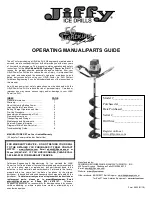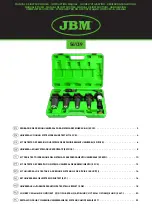
Storage
Store parts on a soft surface, to avoid damage.
Rotors and other parts should be clean and dry. Store them
open to the air, not in a plastic bag, so that any residual
moisture evaporates. Face the parts upward, to avoid
moisture retention in the cavities.
Decontamination
If tube breakage occurs, releasing toxic, infectious,
pathogenic, or radioactive material into the unit,
decontaminate the chamber.
Rotors have sealed containers, that provide aerosol
containment and, if used as directed, keep spillage
confined. If breakage occurs, it may be sufficient to only
decontaminate the sealed carriers.
The Decontamination Table, in Chapter 4, lists the
sensitivity of various materials to common sterilization
procedures. When using a 1-to-10 dilution of household
bleach (sodium hypochlorite), to decontaminate metal
rotors or accessories, follow decontamination by the
corrosion cleaning procedure (See 5.2), since chloride ions
attack most metals.
Always decontaminate for the minimum recommended
time. If you observe corrosion, remove it, as described
earlier; discontinue use of the method; and use an alternate
decontamination procedure.
Polypropylene sealed carriers can be autoclaved. Remove
any sample tubes, before autoclaving, unless they are
completely full of sample. Remove caps, stoppers, and
other tube closures, before autoclaving, to keep the tubes
from collapsing under pressure. Autoclave the rotor and
accessories at 121 ° C @ 15 psig for 20 minutes. Do not
stack polypropylene rotors during this process. After
cooling, perform a normal cleaning operation, as described
above.
Repeated autoclaving seriously degrades the performance
of polycarbonate sealing covers.
MARATHON Series Operation Manual
38
Artisan Technology Group - Quality Instrumentation ... Guaranteed | (888) 88-SOURCE | www.artisantg.com






































